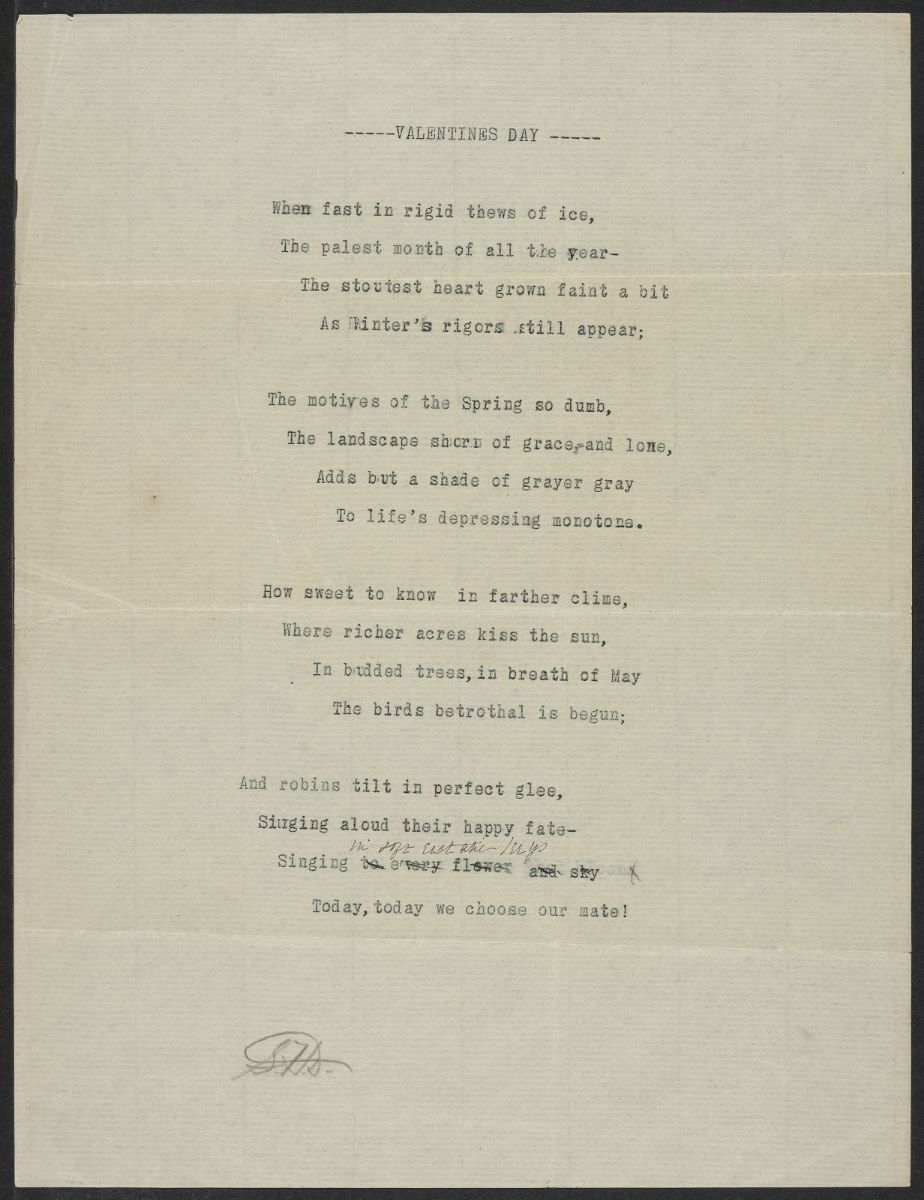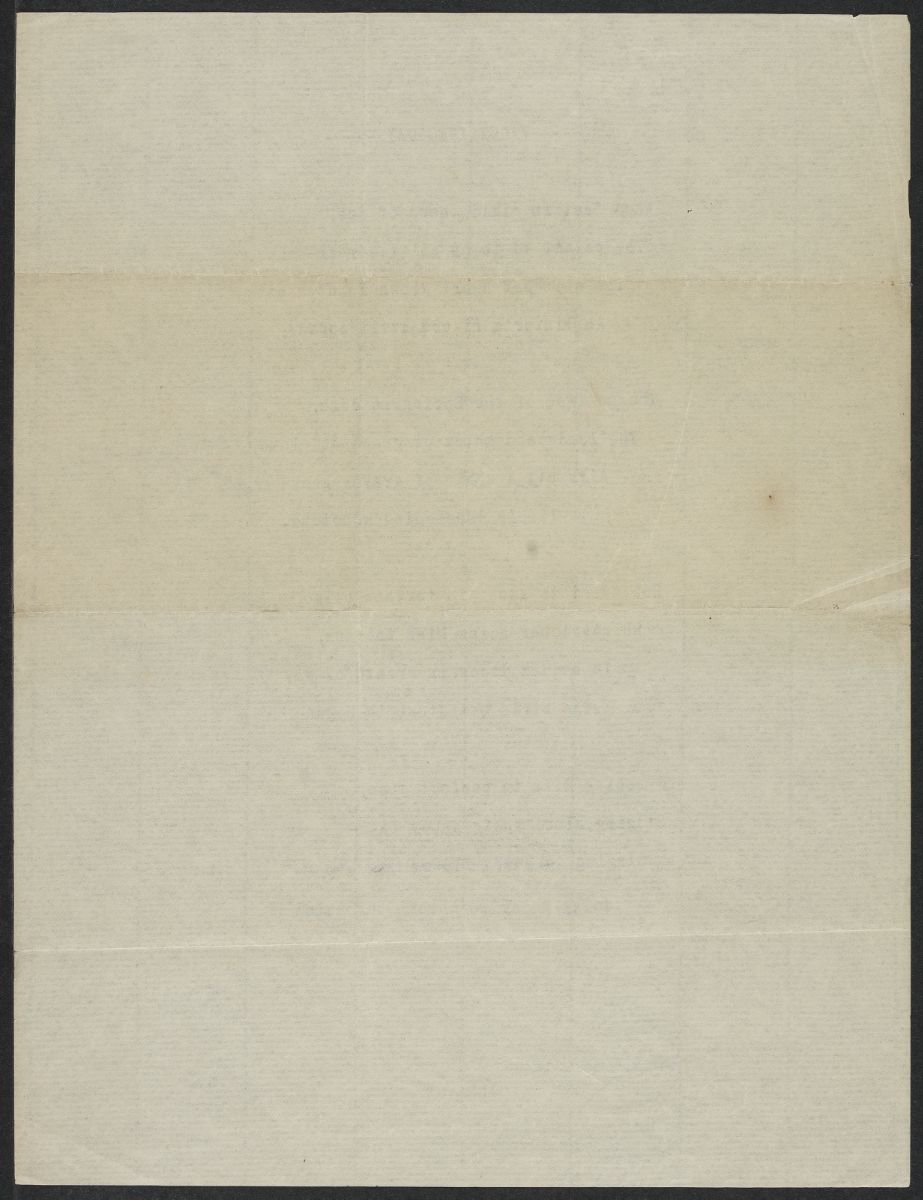<< Return to Poems
Valentines Day
< transcription 1 recto, verso >
Notes
H bMS Am 1118.95, Box 9
Late 1880's? Typescript, with revision in last verse and signature in pencil. Single sheet, folded as if to enclose in an envelope.
See "The robins choose to-day" for possible compositional connections.
In seasonal theme, not unlike "Of June, and her Belongings" or even "Fresher than Dawn...", and probably written around the same time. The poem is fairly conventional and may have been written to the particular taste of a periodical or individual. Its ballad stanzas maintain a fairly strict formal pattern of tetrameter, each line syllabically regular, at a count of eight.
The poem's title theme comes out of a tradition established by one of the first publishing forums for women, the seasonal book trade. Both popular and profitable, the market for literary tokens and remembrances provided some upper-class women, publishers and contributors alike, their first opportunity to earn an independent living. Through the seasonal trade, women's poetry became slowly publicized and professionalized, growing into a year-round market eager for their volumes and annuals. As a result, women's contributions to local newspapers and other periodicals also increased and fewer submissions were printed as anonymous. Recall that, in 1862, Emily, and/or Susan acting upon her behalf, contributed a version of "Safe in their Alabaster Chambers"; for publication in the Springfield Republican, one of several such contributions made during Emily's lifetime. Susan herself contributed several short stories and essays to various periodicals.
Several characteristics of this typescript poem suggest Susan prepared it for print, including its typographic translation-- as it was not a medium she would have composed in-- its stylized tiered stanzas, regular end-stop punctuation, and the fold as if for enclosure. Further research may uncover a periodical and date.
Note too, that the poem's first two stanzas distinguish it somewhat from other poems of the seasonal genre. Susan's interest in natural transformations and the juxtaposition/complication of human emotion and natural forces echo many of Emily's poetic transformations. In this case, the readerly expectations established by the sentimental title theme of "Valentine's Day" are undermined by the poems first stanzas--testaments to the very harsh realities of winter in New England, as Susan describes it, "a landscape shorn of grace, -- and lone,/ [that] adds but a shade of grayer gray/ To life's depressing monotone."
Her revisions of the poem also reveal refined attention to the unit of the line, its musical integrity and the perfecting of conceit. For example, both her addition of a comma and dash for emphatic, rhythmic pause (second stanza) and her alteration of the undistinguished line " Singing to every flower and sky" to "Singing in soft ecstatic keys", produce more lyrical, sensual and imaginative descriptions, changes which seem to come directly out of the tradition of Emily's own poetic individuality.





